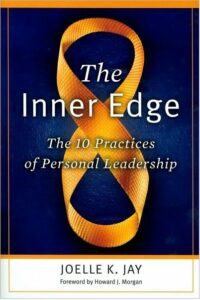The following article appeared on Inc.com today as a part of my column, “Behind The Desk.” Look out for new columns every week!
Recently I received a call from a business owner who was so stressed by the size of her To Do list that she was practically hyperventilating. Wringing her hands and wrinkling her brows, she worried she would never be able to get it all done, but she couldn’t not get it all done, either. She was completely overwhelmed.
Rather than try to race through all those action items at warp speed (stressful! and not very smart) or cram them all into the little boxes on her calendar (impossible), I suggested we take a different path–one of patient persistence that I call The Universal Timeline.
The universal timeline is the schedule on which everything happens at just the right time, whatever that may be. There are no dates and deadlines. No time pressures. Just milestones. There is a right time for everything. You don’t need to force it.
Obviously, you won’t want to use this strategy when:
- You have a hard and fast deadline.
- You’re accountable to other people.
- Other people are counting on you to stay on a certain schedule.
But when none of those are the case, you can learn to ease up and speed up at the very same time.
That’s what the universal timeline does. It allows you to take advantage of just the right circumstances at just the right time to slip through your tasks with the most beneficial, advantageous timing. Here are three steps to find yours:
Make sure the time is right and in line with your vision. Say, for example, you have a really big project to complete. Once you’ve glimpsed the possibility of completing this project, you’ll be chomping at the bit to get going. On the universal timeline, if the time is right you will get up off your chair and start now.
Know your schedule. On the other hand, maybe now is not the time. Maybe your plate is full, your mind is distracted, or you just don’t have what you need to succeed. That’s okay, too. On the universal timeline, if the time isn’t right you don’t start. Instead, you make a note to do the project (“Start business development plan.” “Hire fitness trainer.” “Write memoir.”) and put it somewhere you will see it every day until the time is right.
Then wait. If you are patient and you maintain that priority, you will be walking along the universal timeline. When the time is right, you will know. Just as a big green sign appears on the edge of the highway telling you THIS IS YOUR EXIT, the “signs” will also arrive to tell you when the time is right to do this task. Either the phone will ring or the calendar will clear or the right person will say the right thing to jar you into action, and you’ll know. It’s time.
To get on the universal timeline, you give up expectations about how long things take to get done. You commit to doing them as fast as possible, but let go of how fast that has to be. Instead you wait for the perfect opportunity to act and take advantage of that perfect timing to let them happen in a snap.
The universal timeline isn’t about procrastination. You’re not putting off the things you want to do. You’re waiting for the conditions to be ideal. Certain activities require certain frames of mind, and you will get in those frames of mind naturally if you are patient. And you will be much, much more effective than you would be if you forced every project to take place on your own schedule.
What could you use the Universal Timeline for? Is there something you are hoping will happen but you don’t know when? Something you want to get to but somehow never do? Write it down, post it up, throw off the pressure of goals and deadlines, and trust that it will get done in its own time.
Related: 3 Ways Entrepreneurs Can Use Their Beliefs To Succeed
